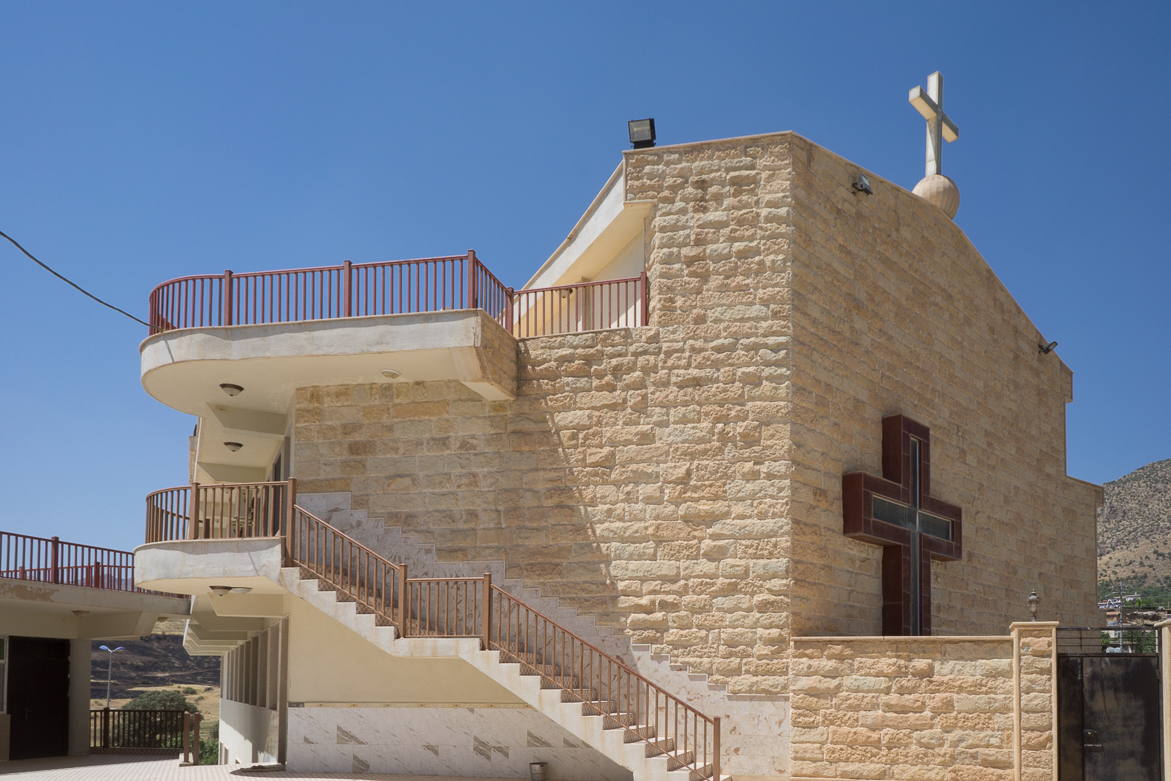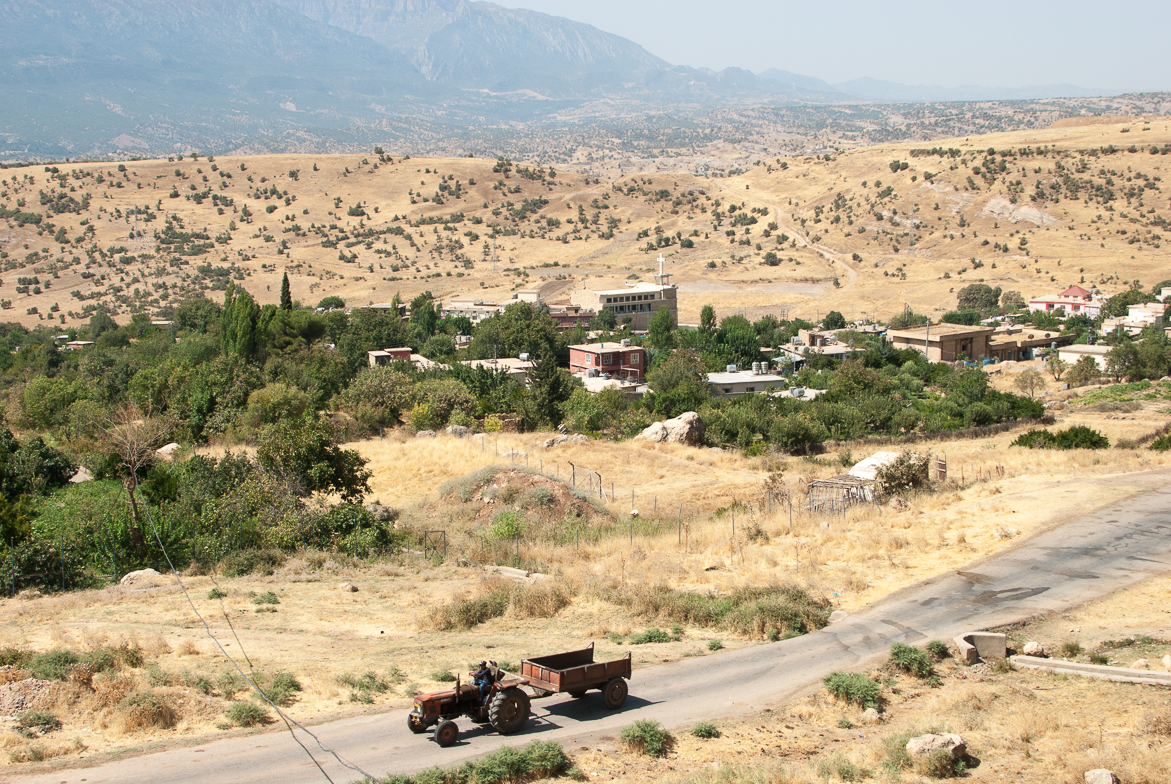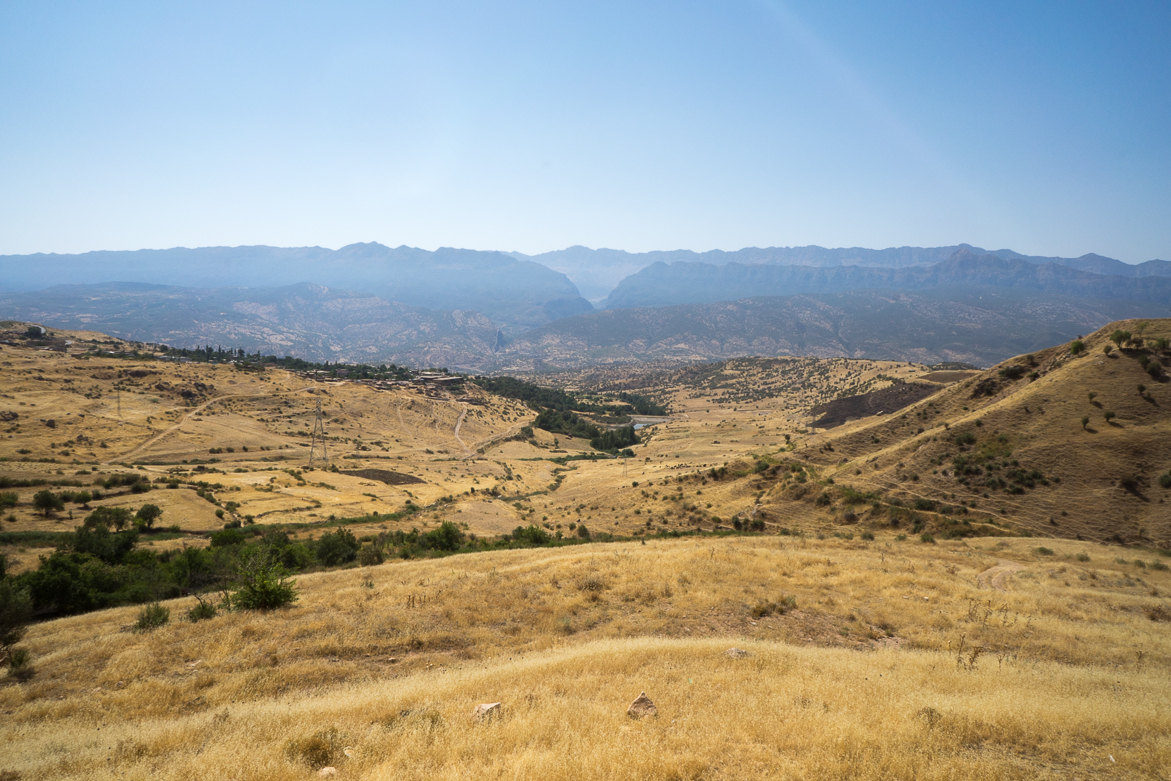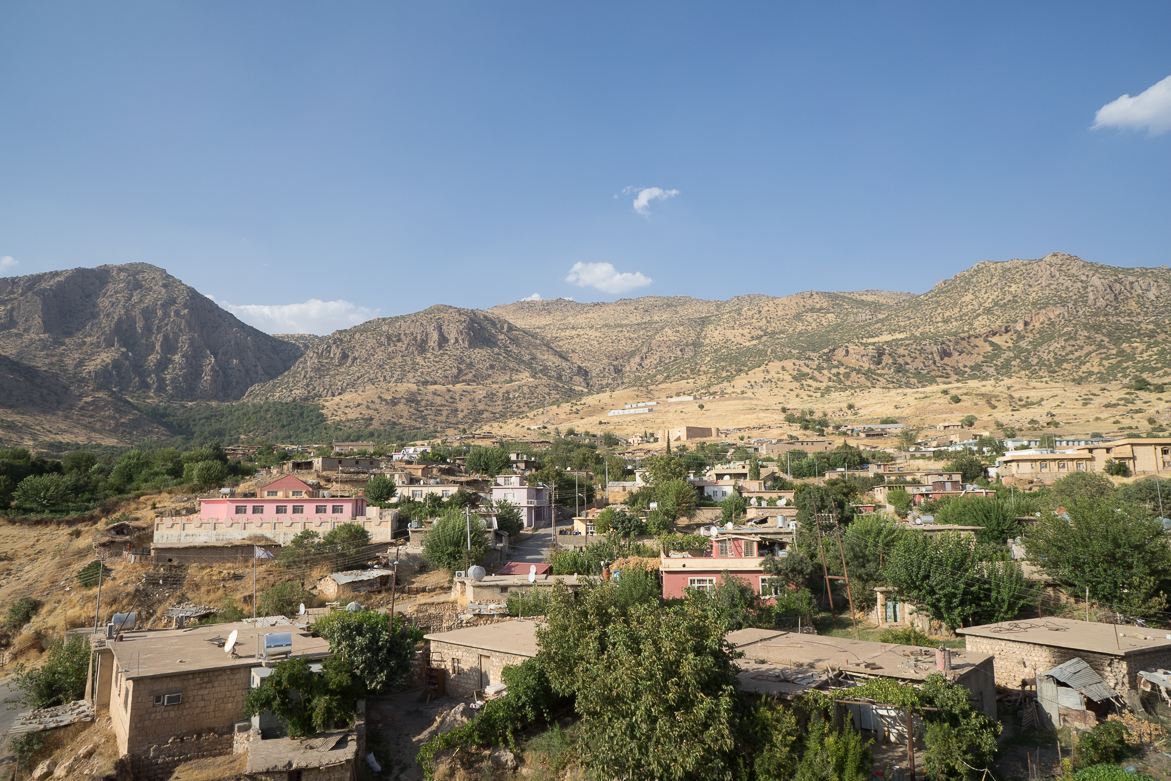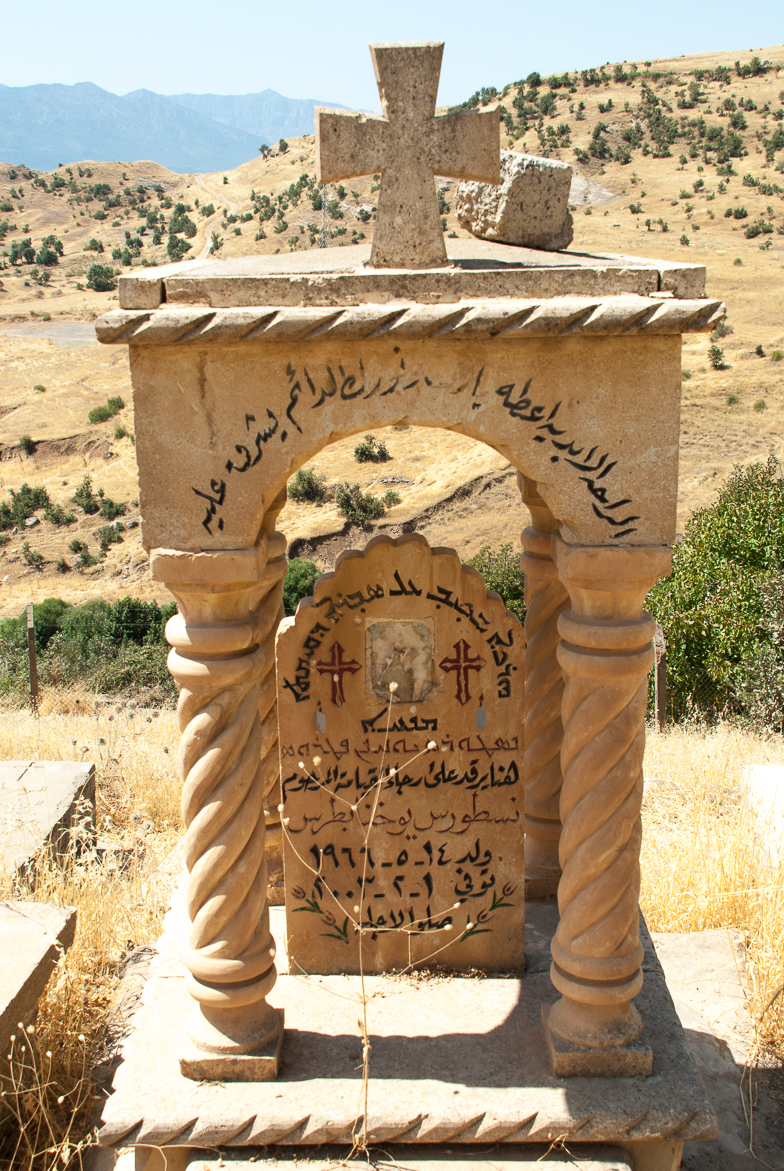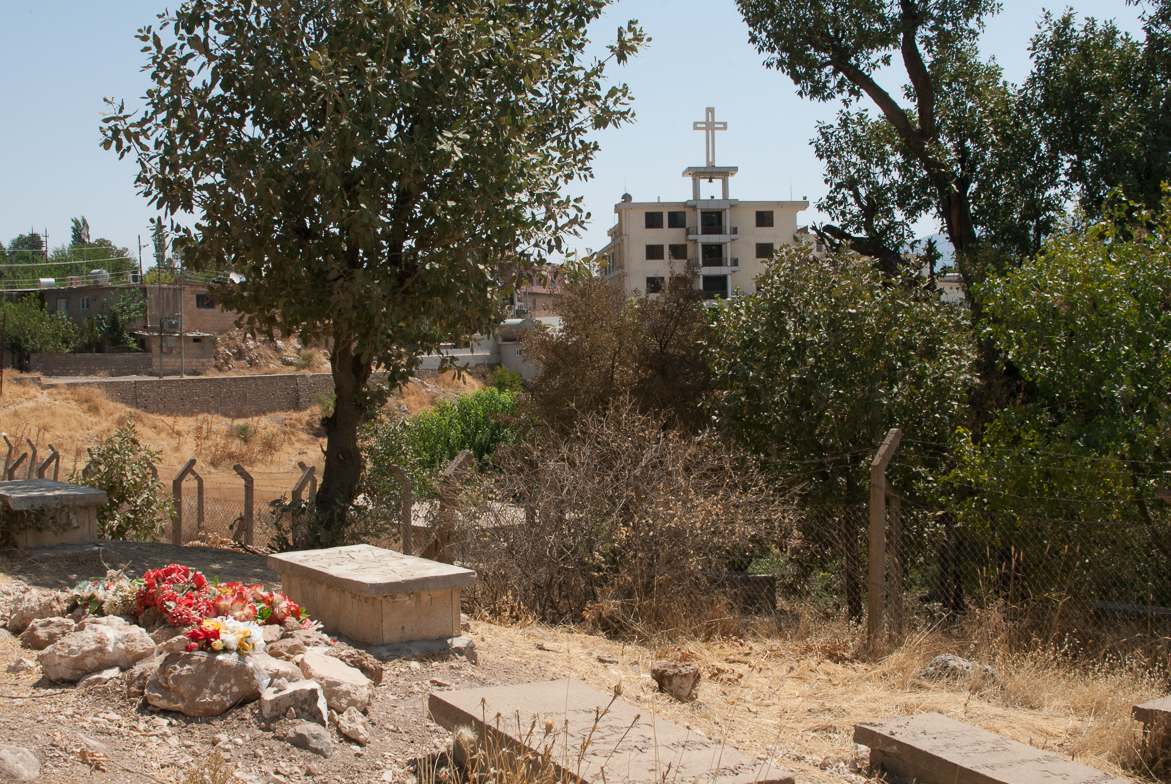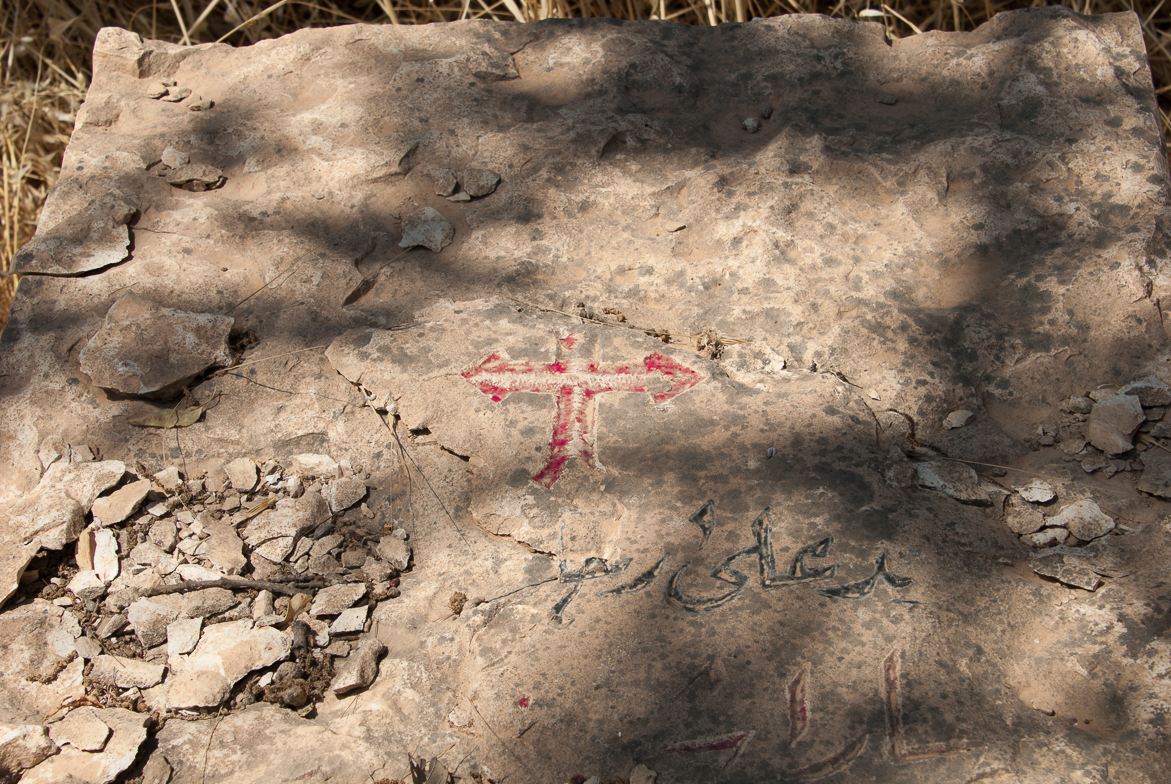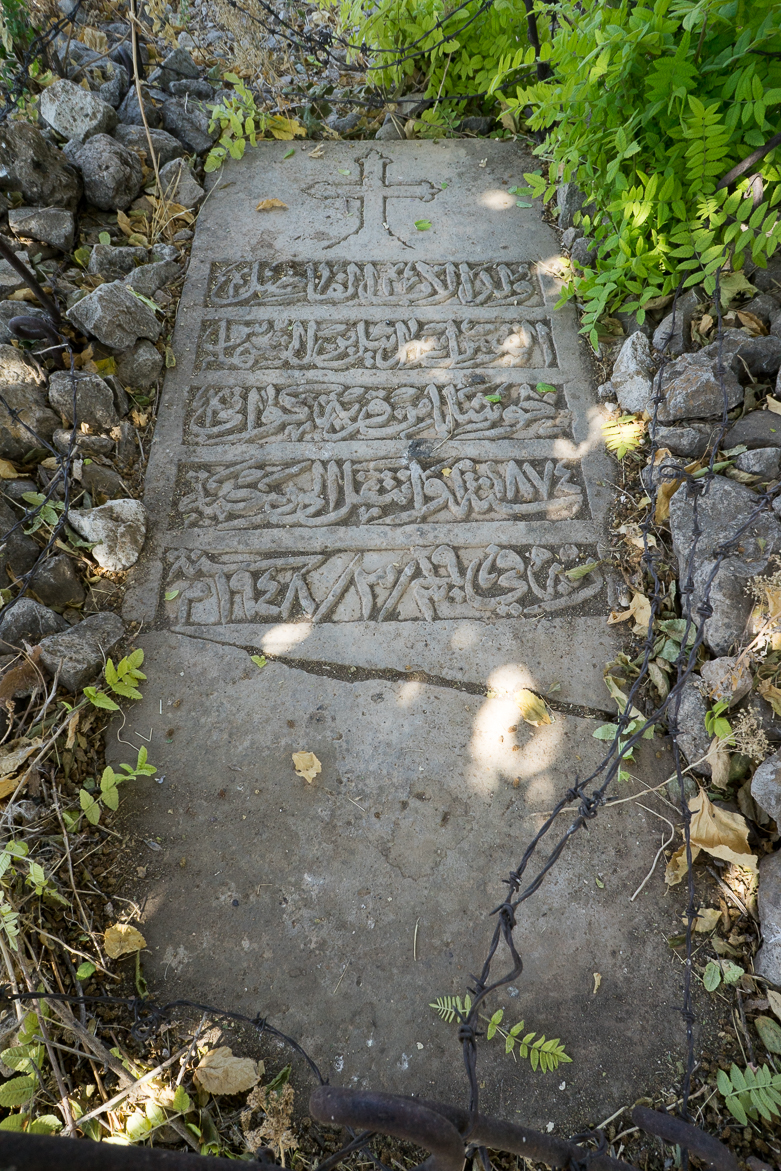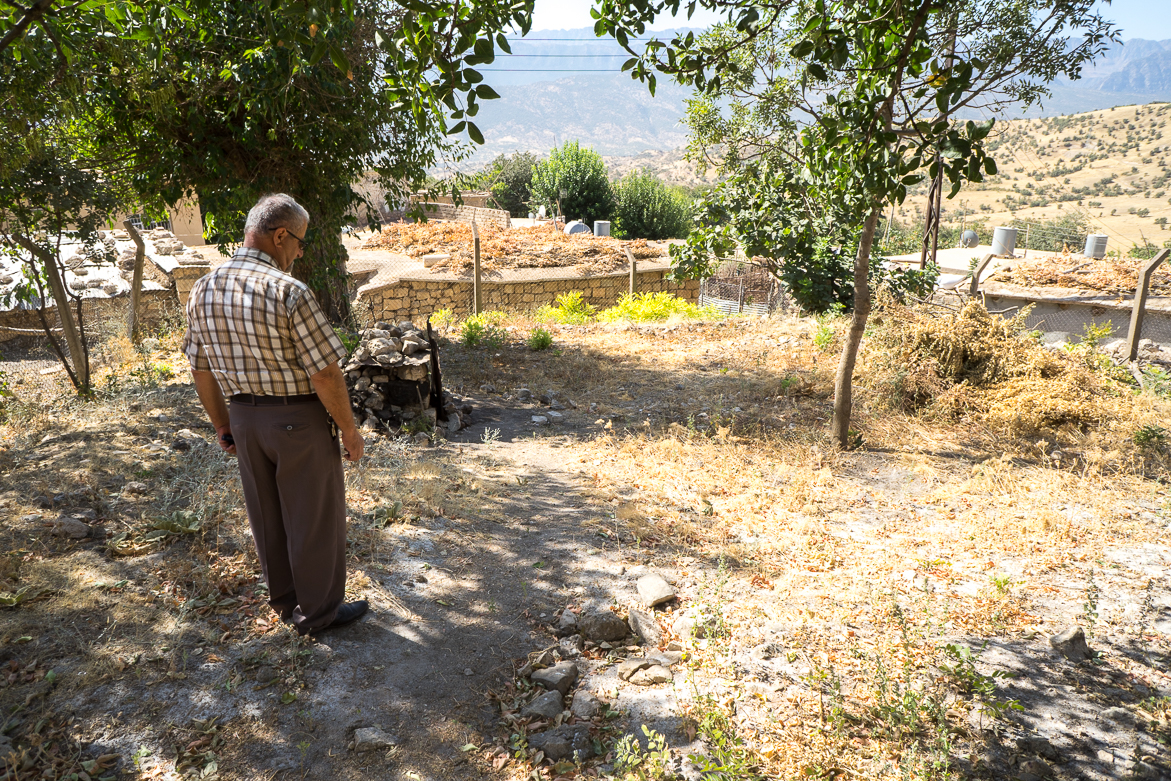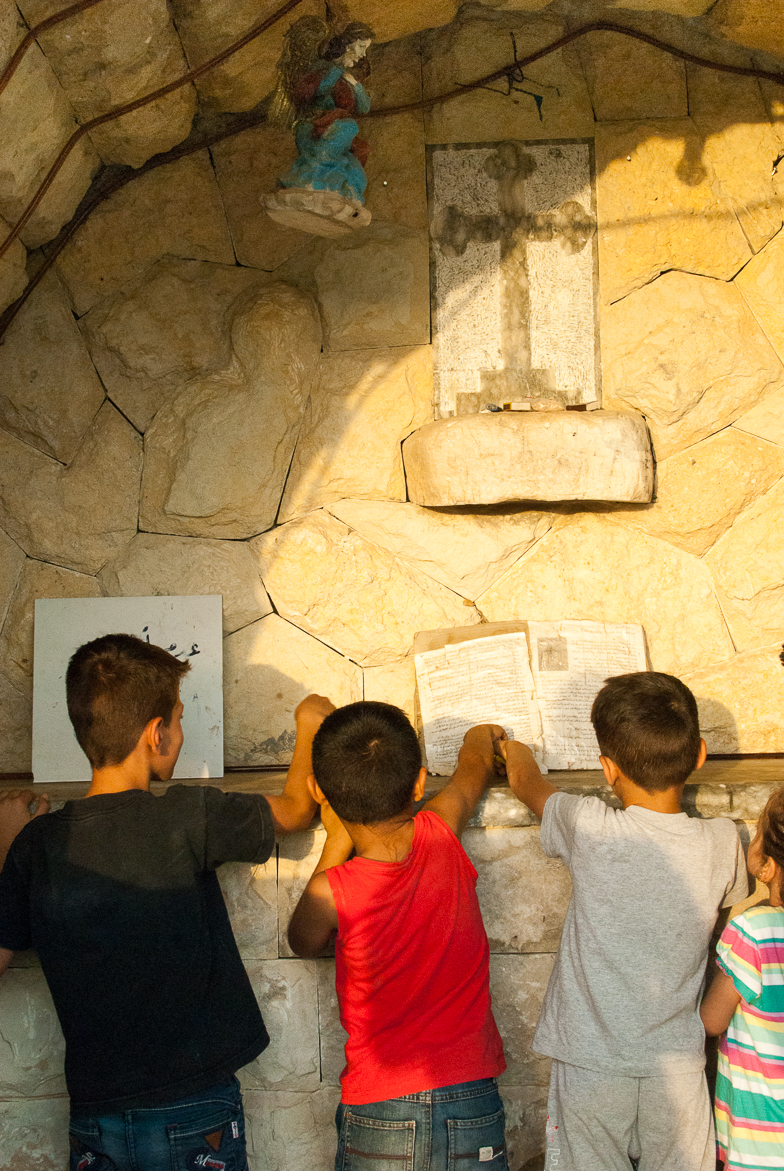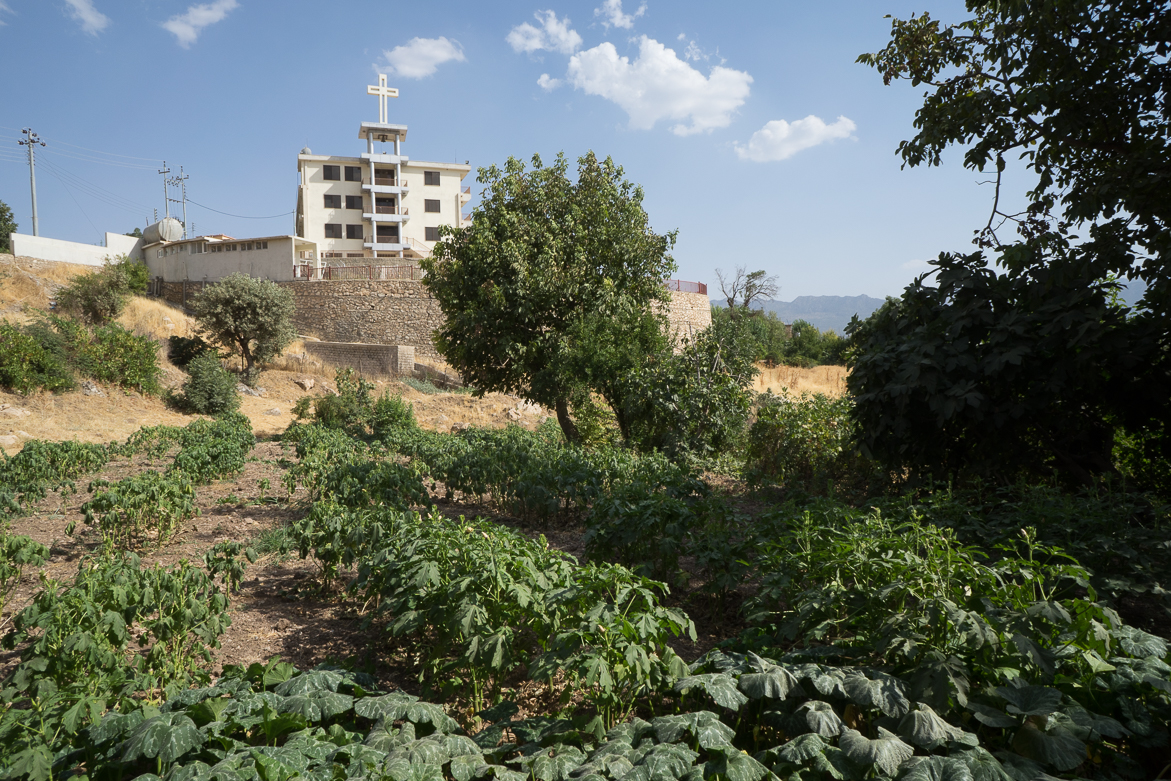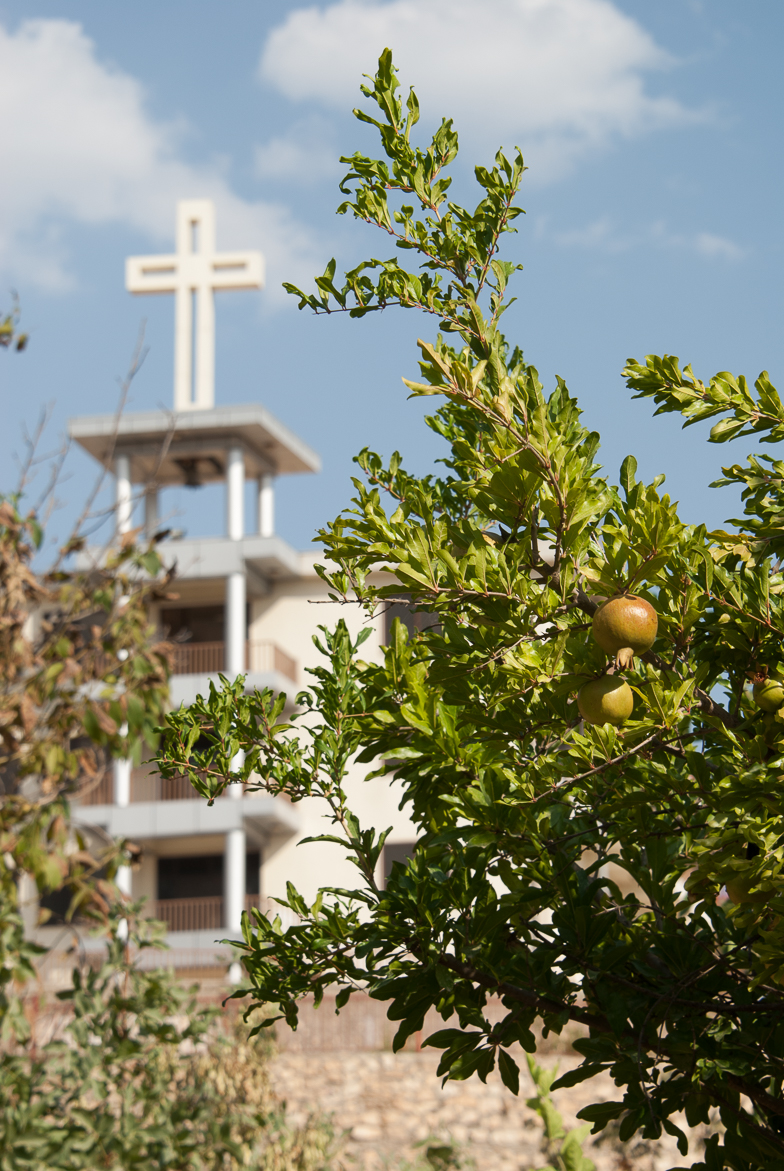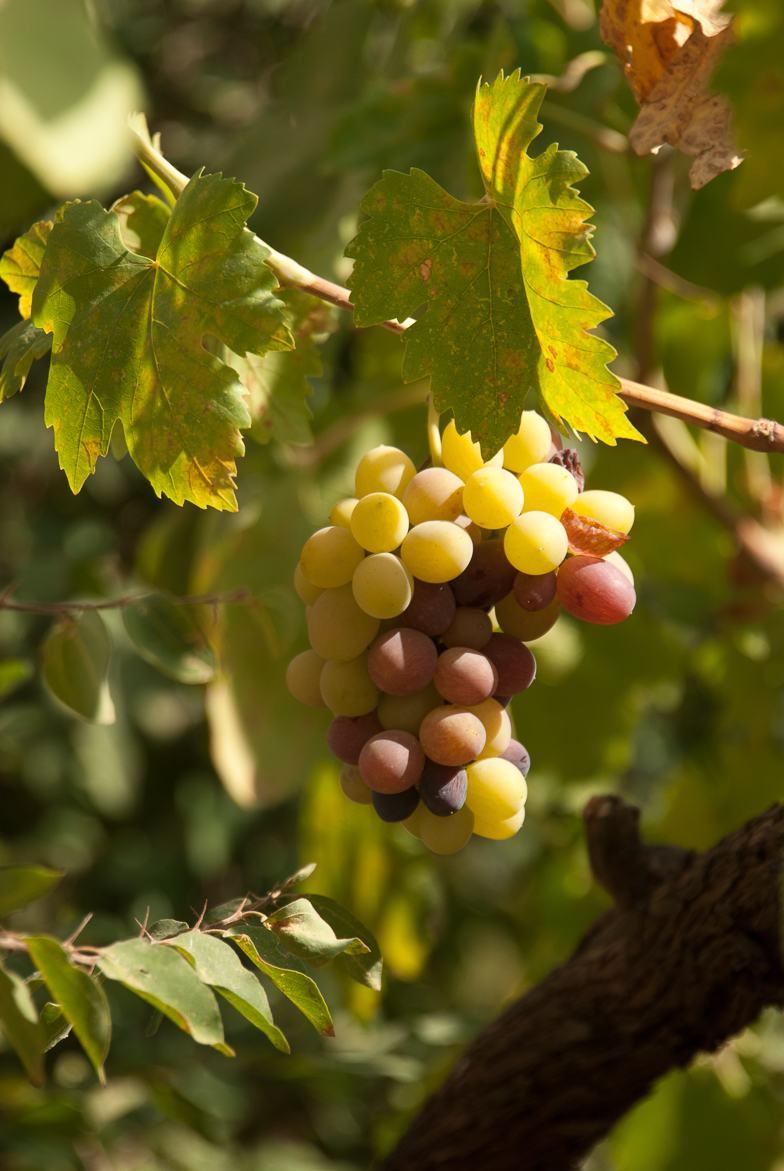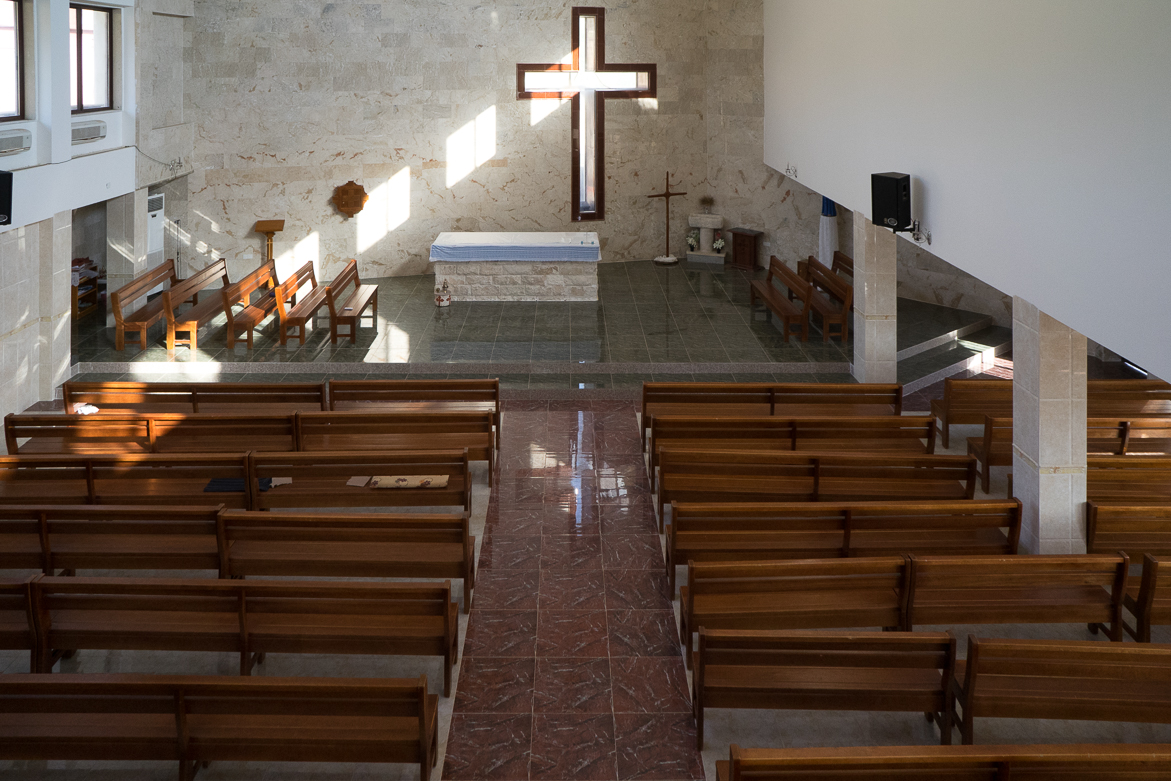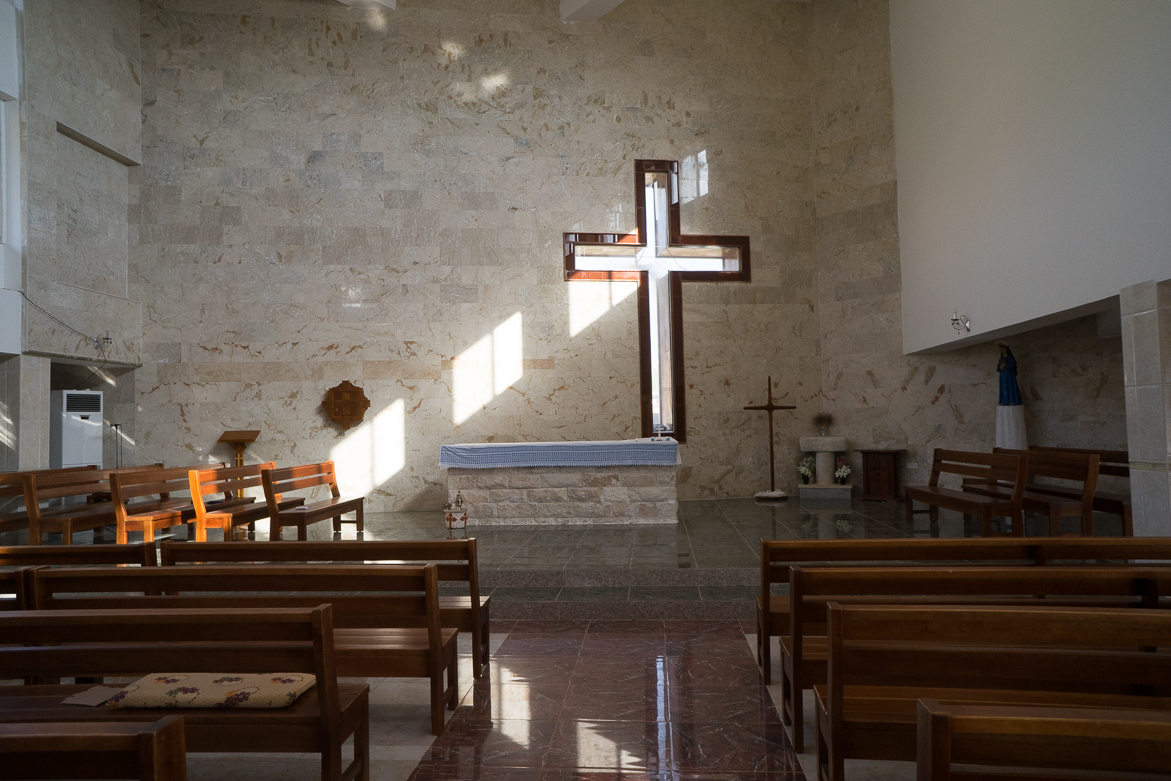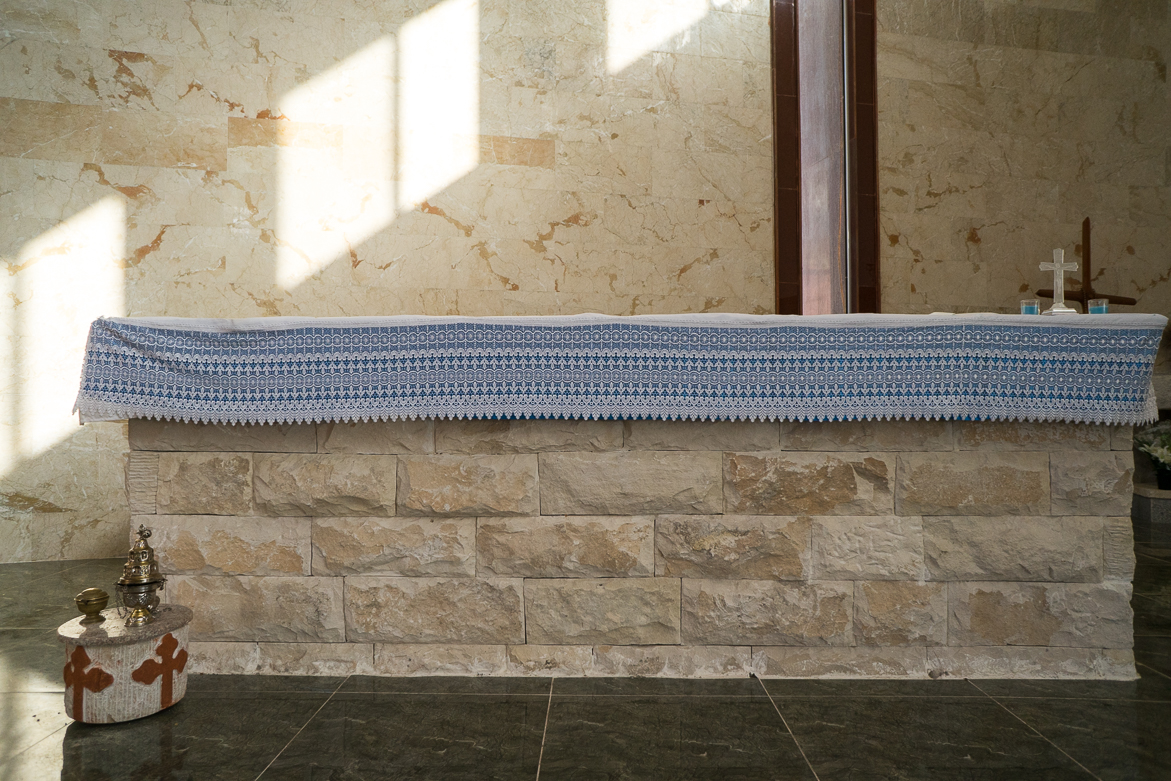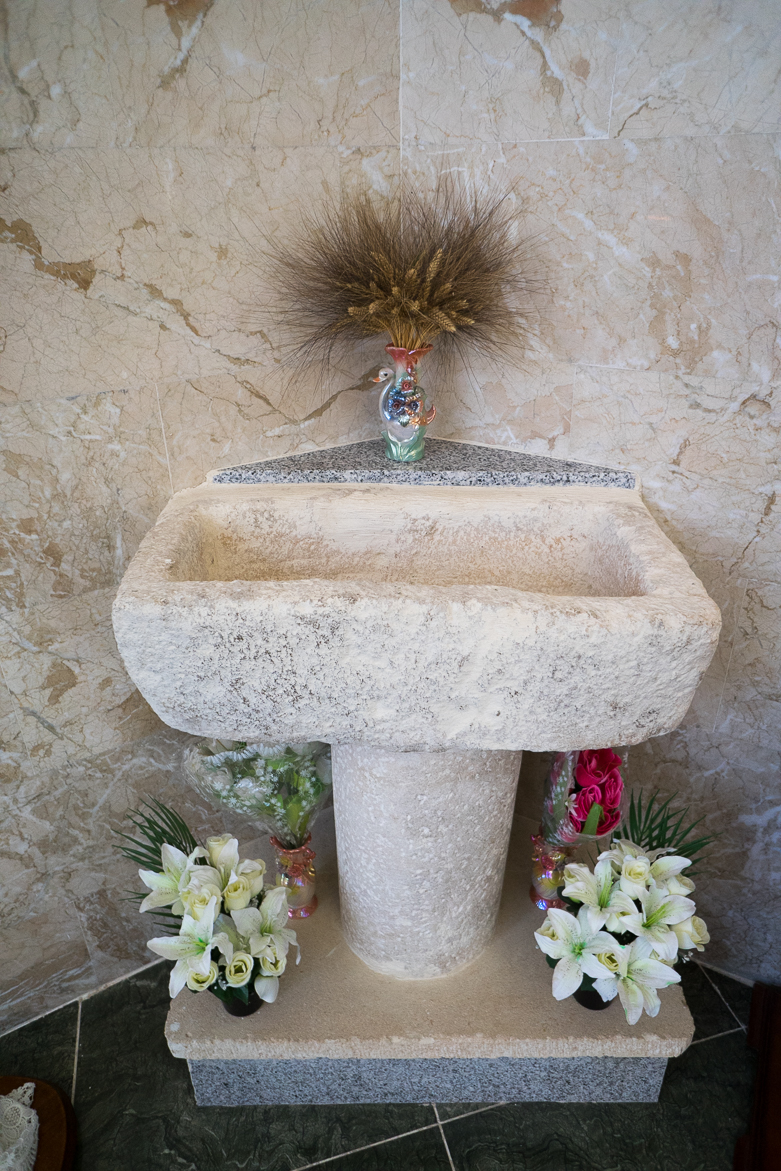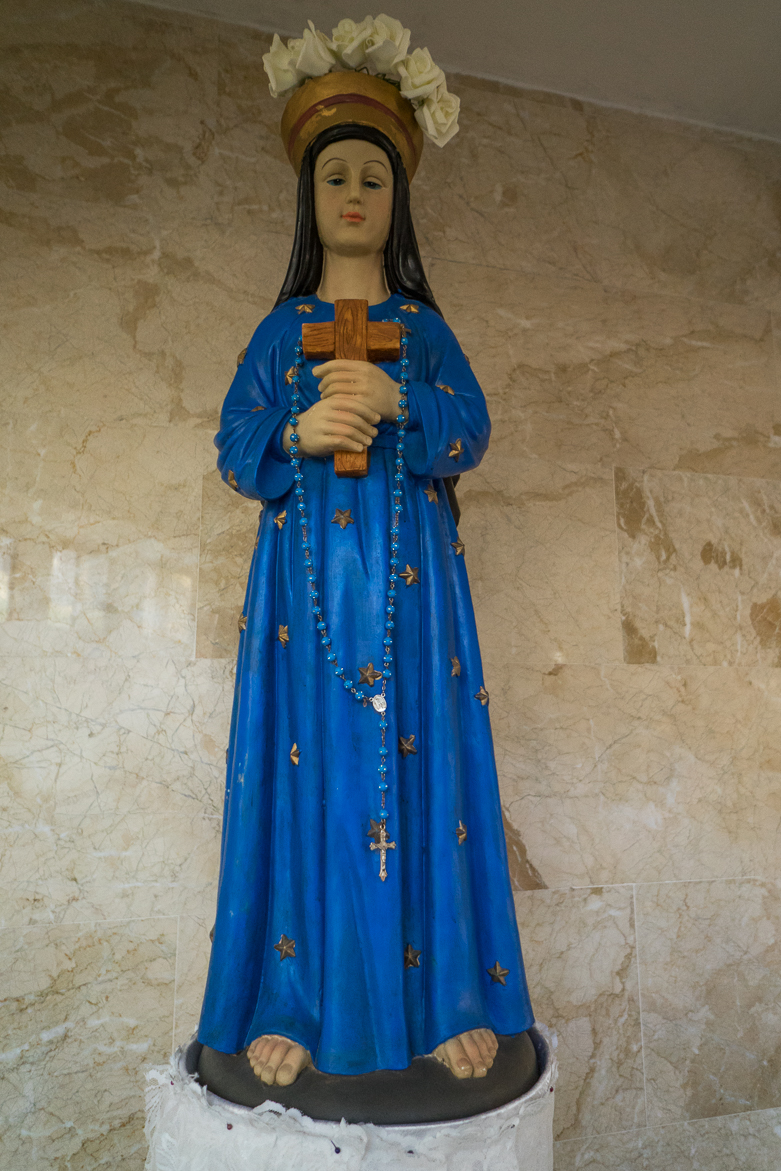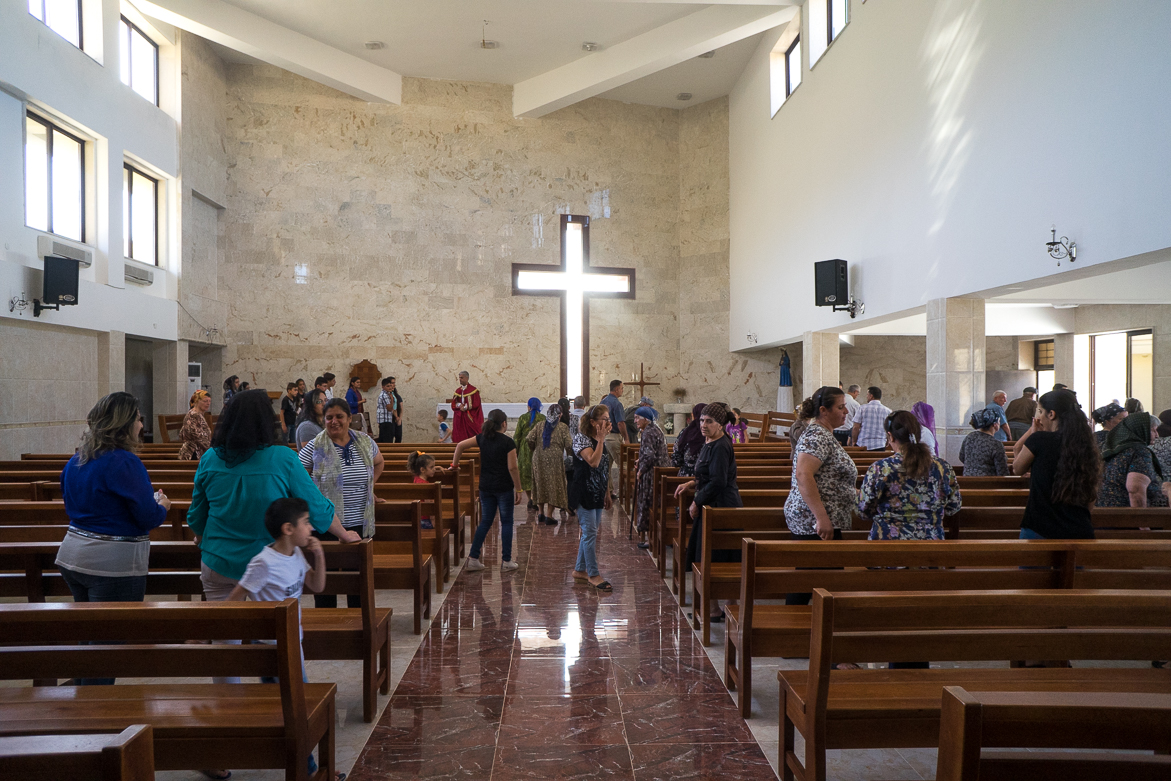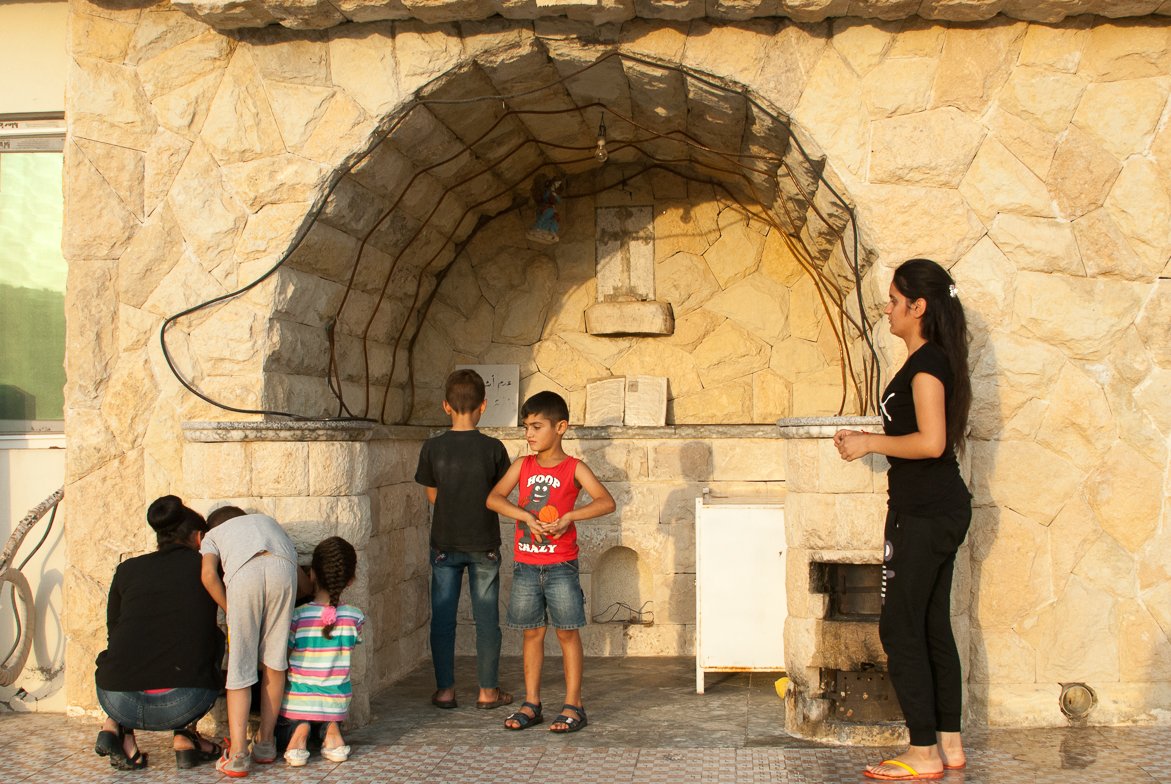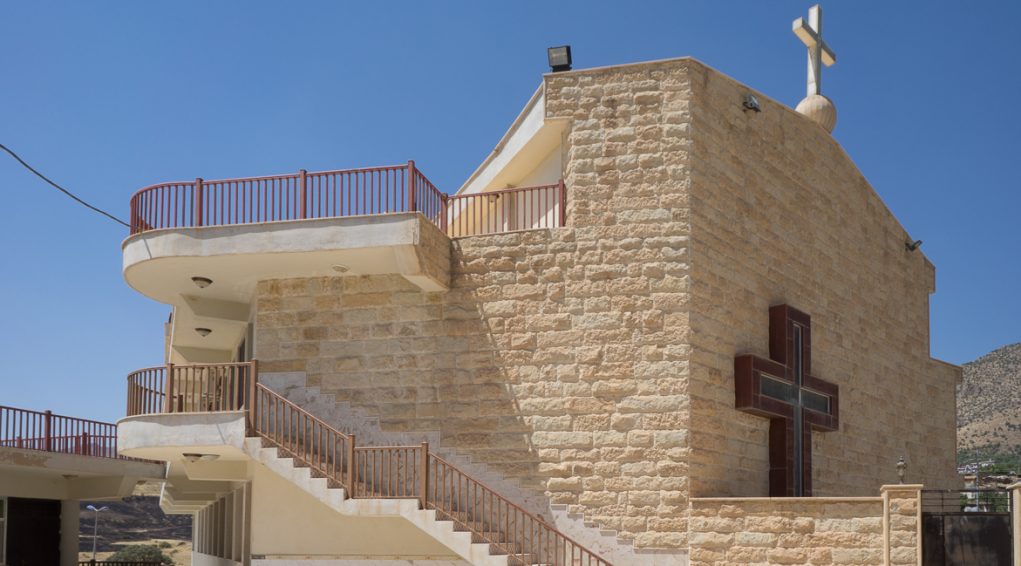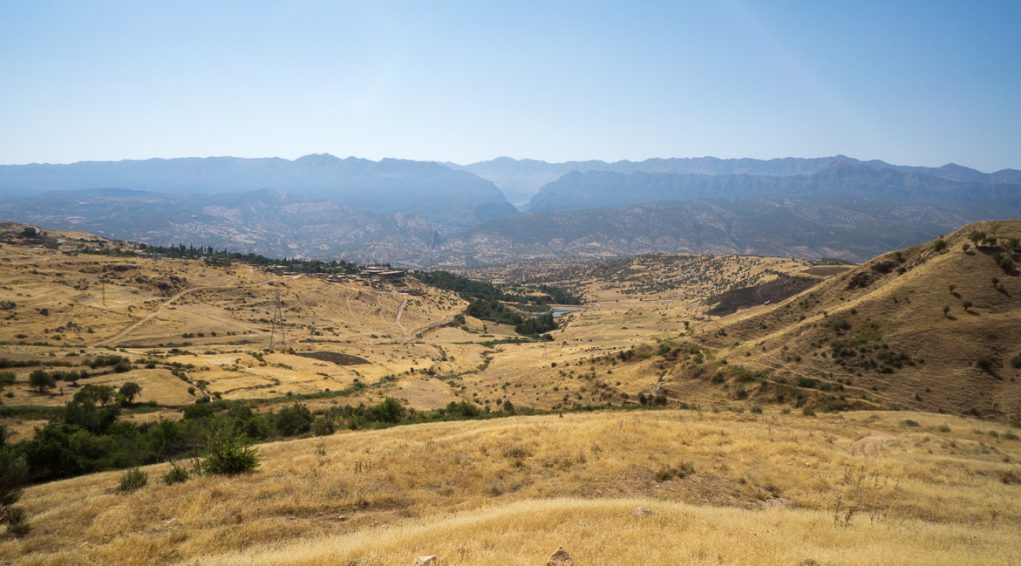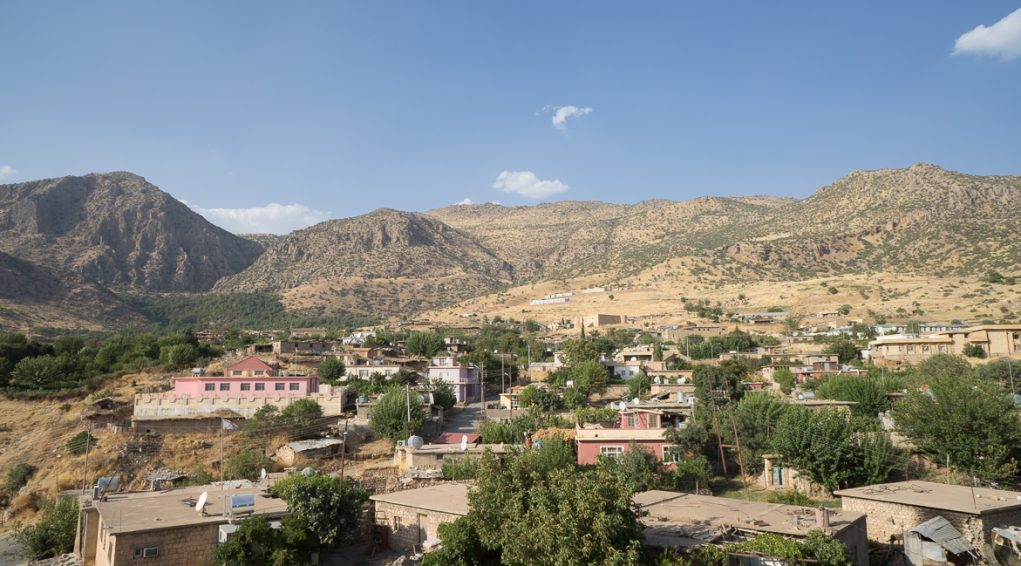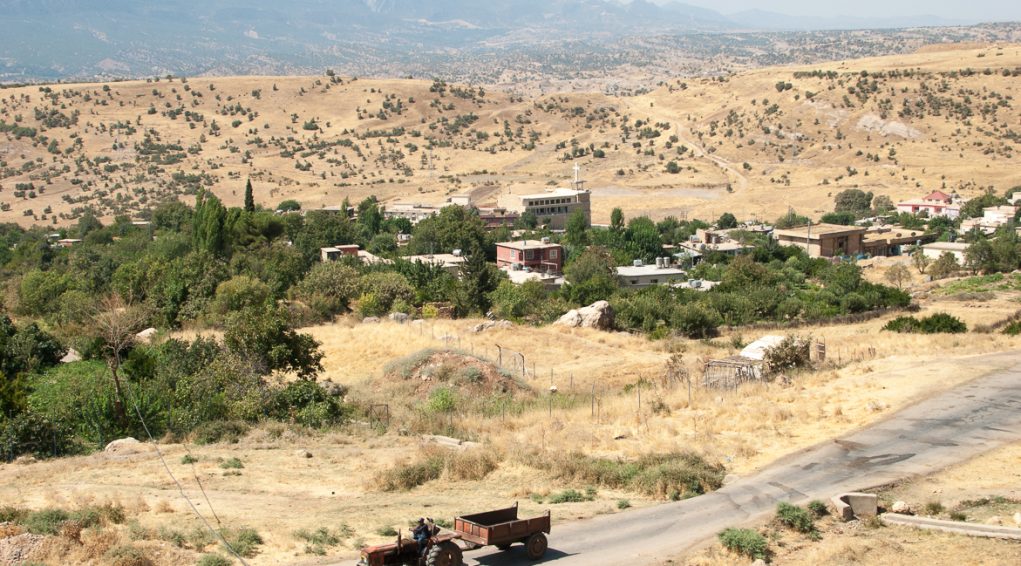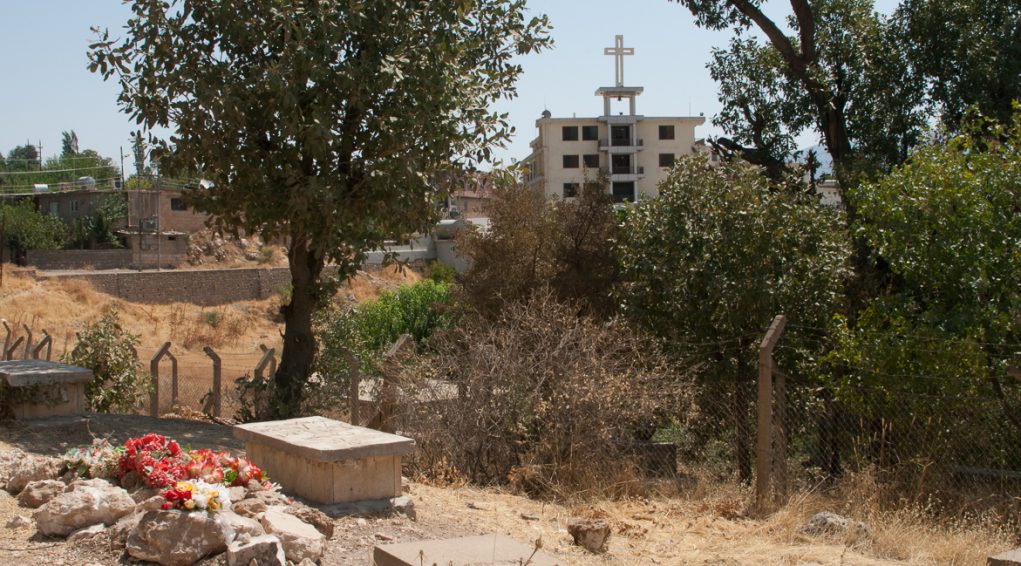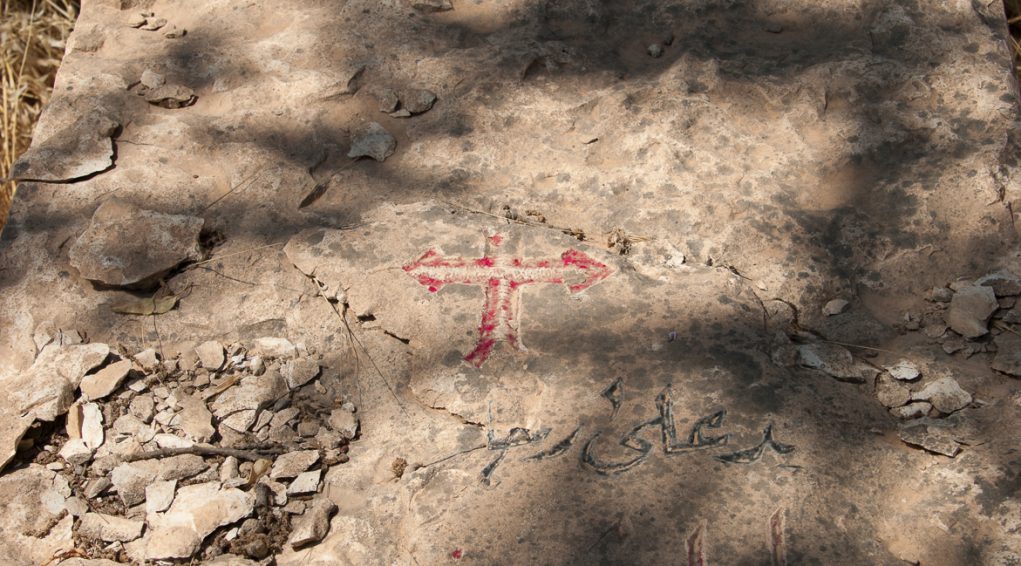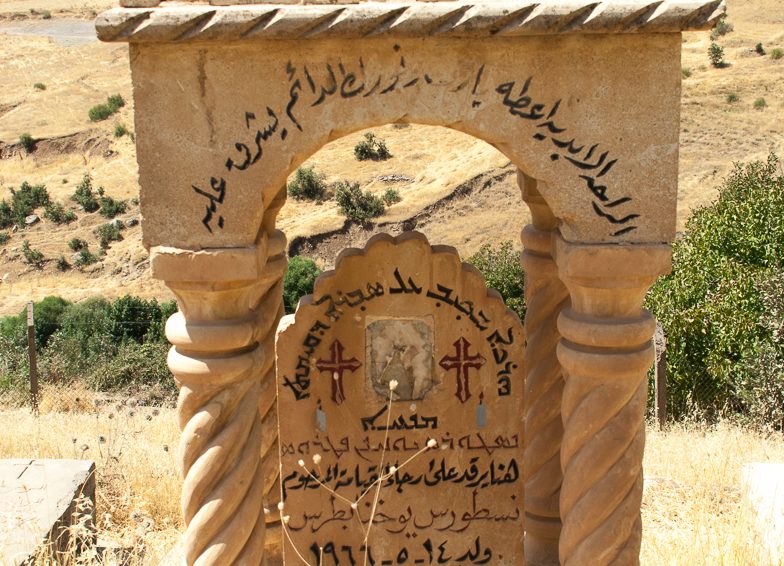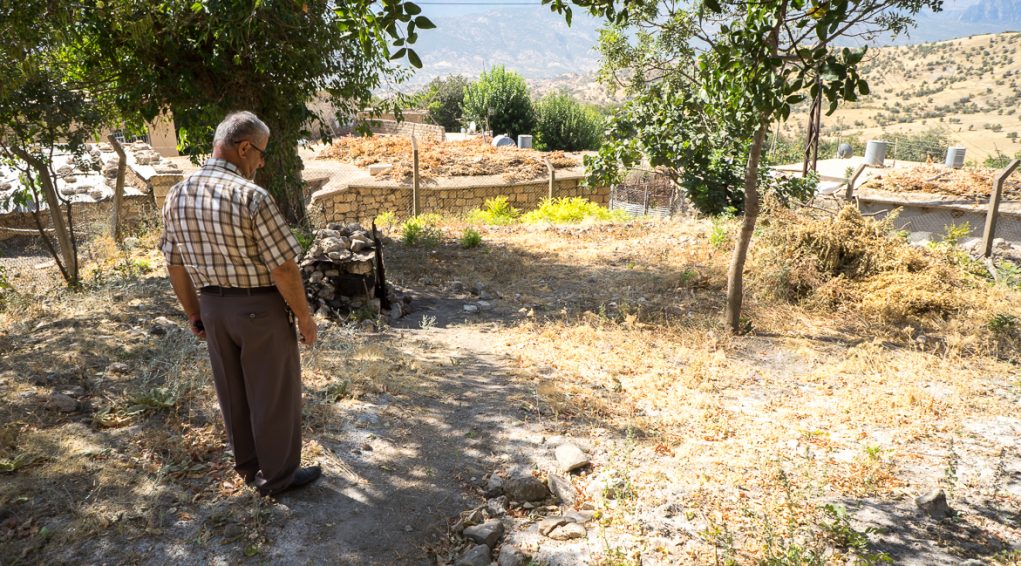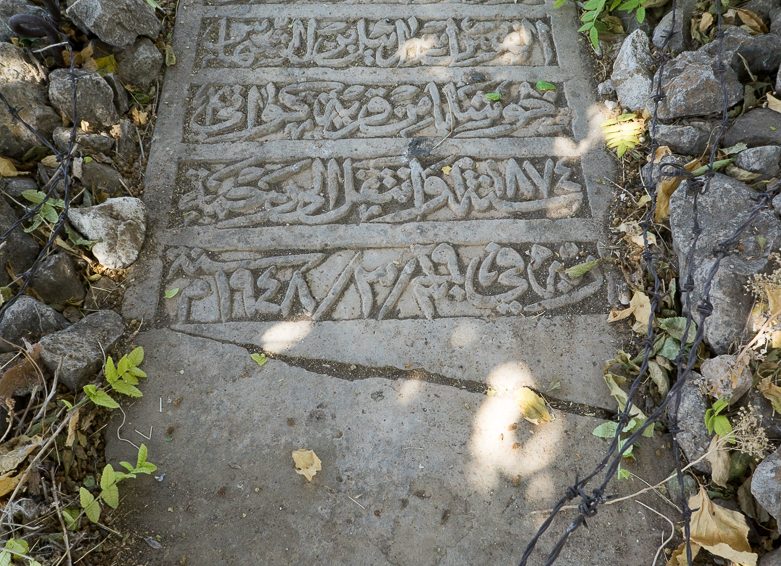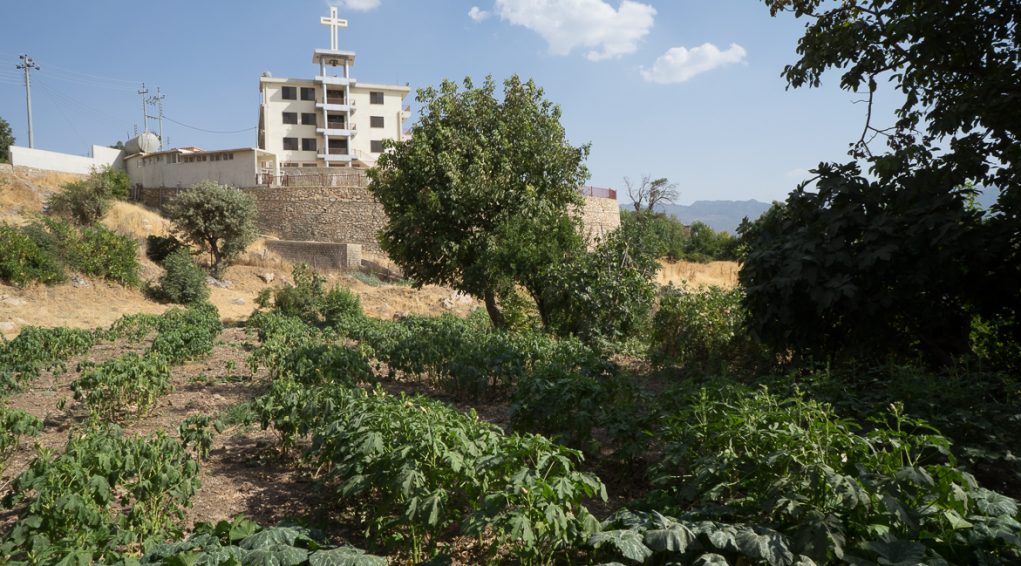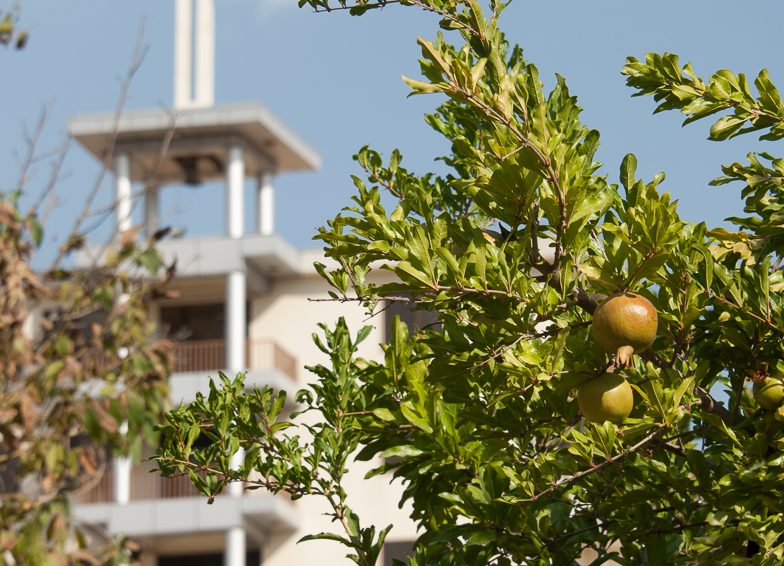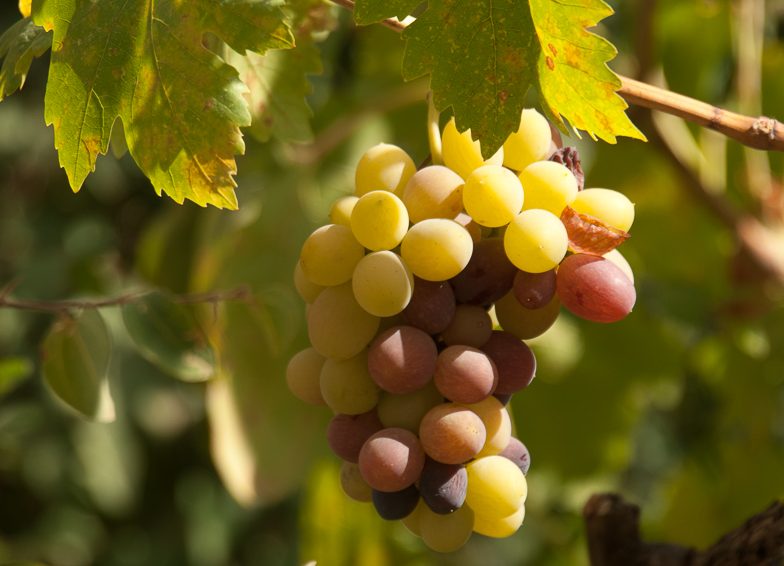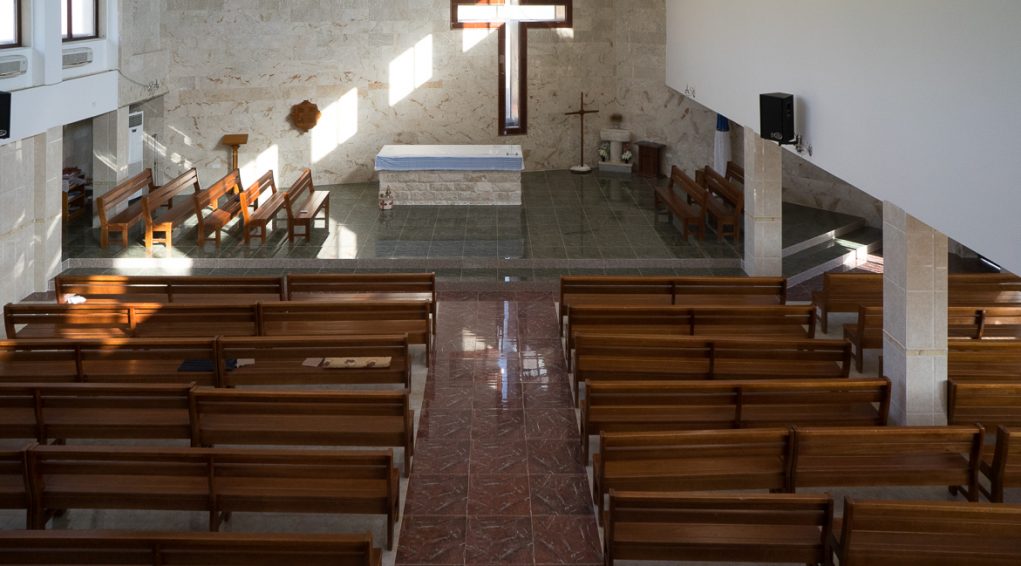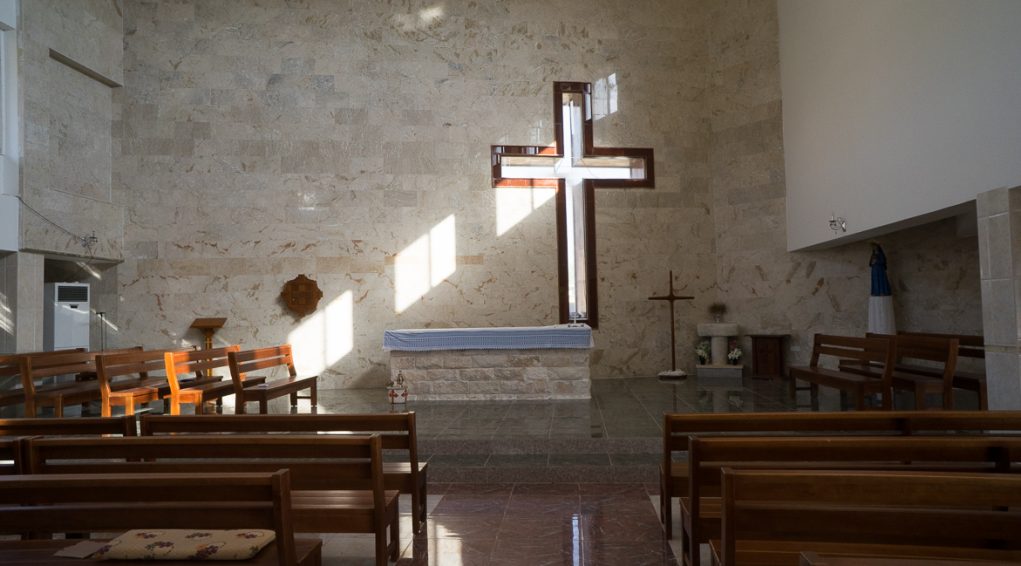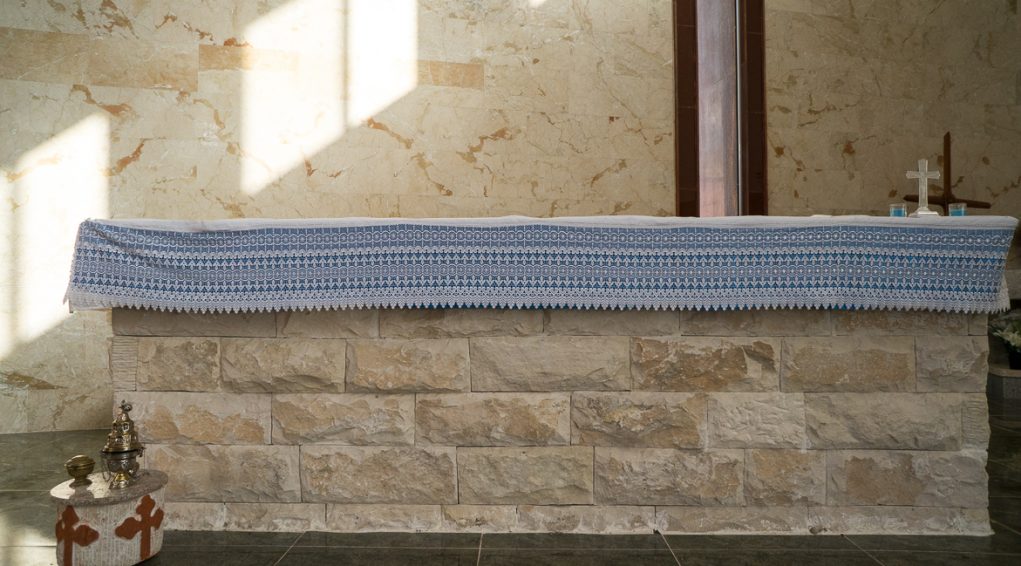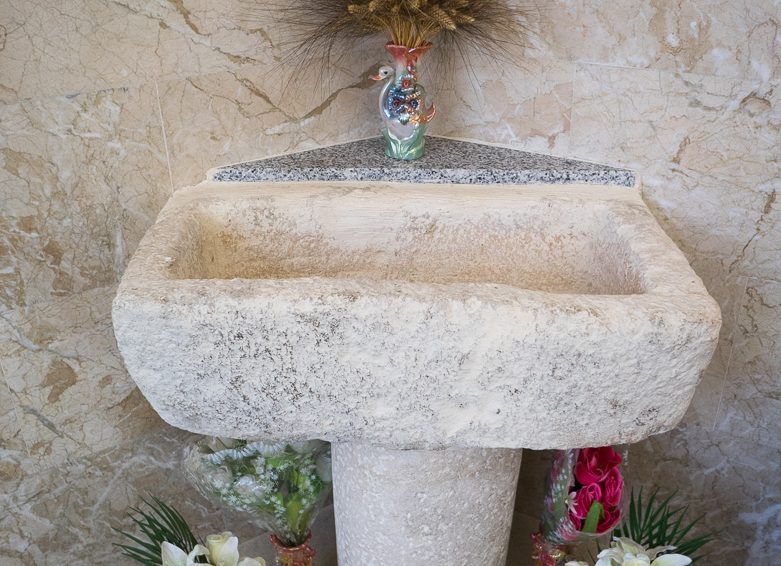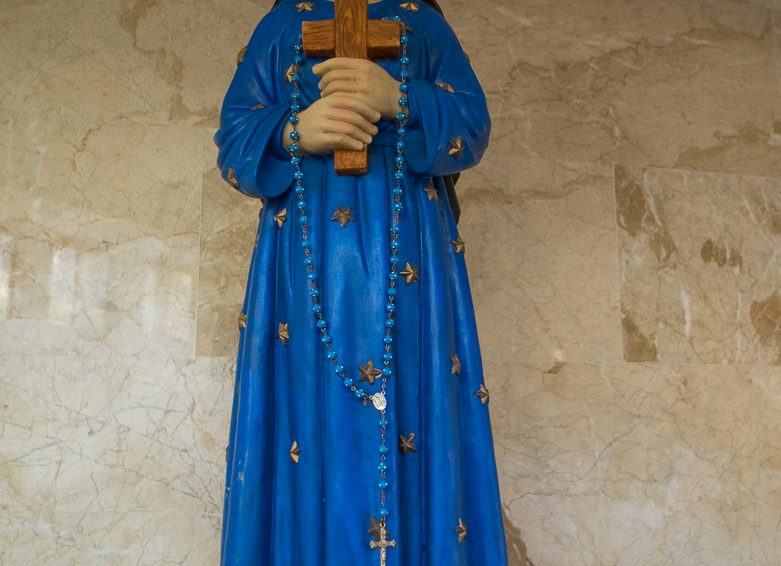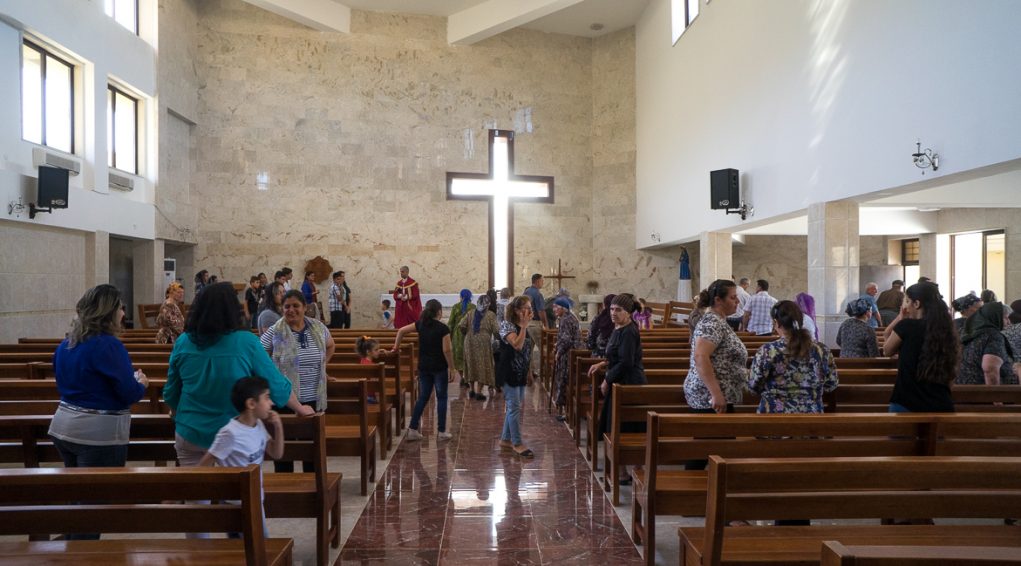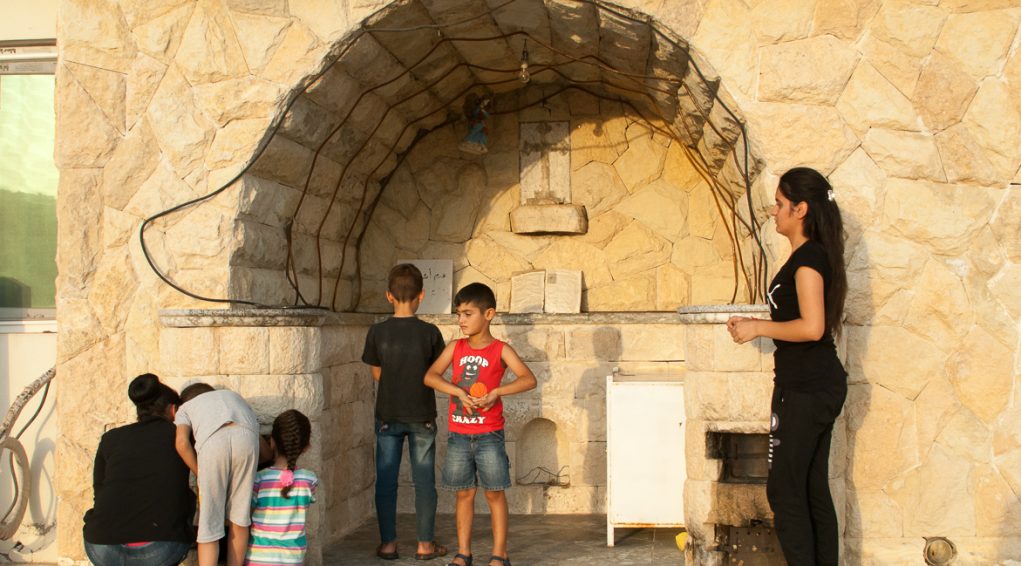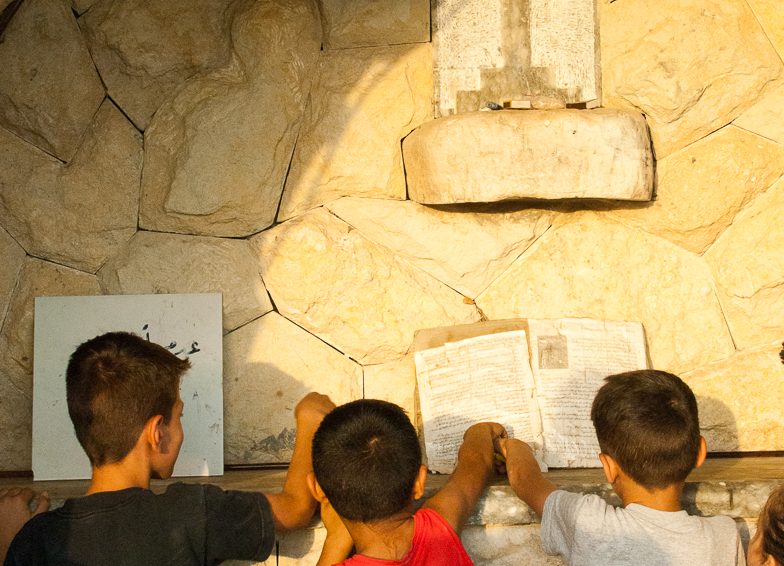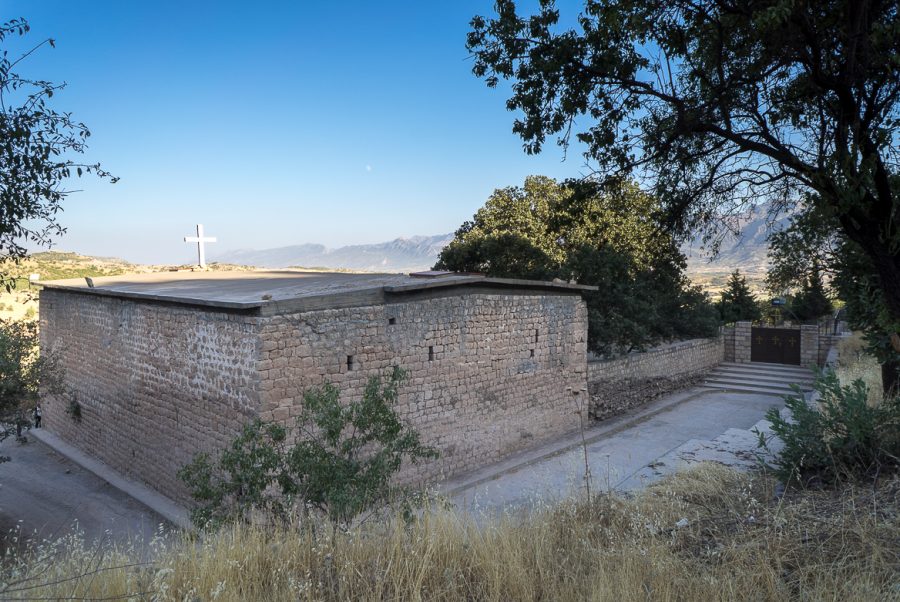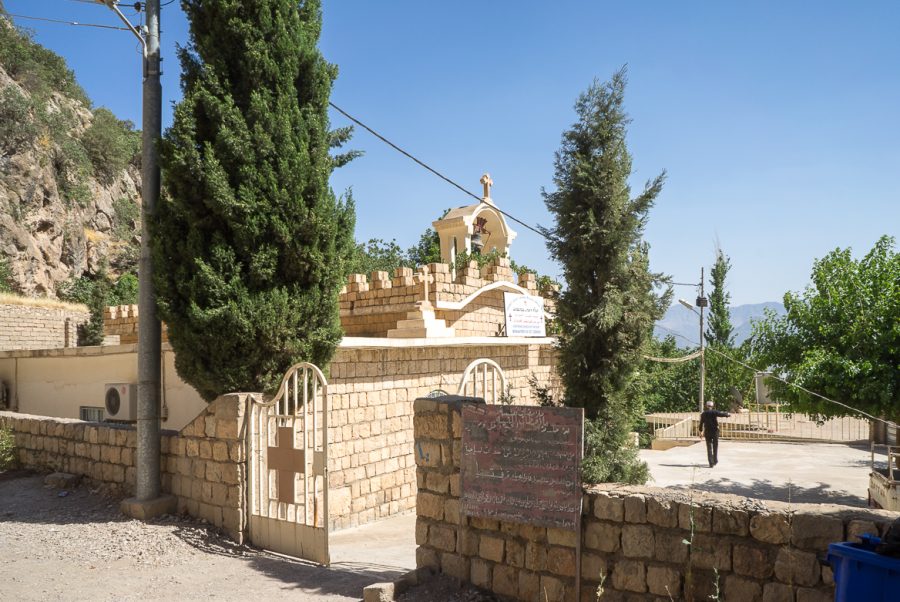Mar Kuryakos Spiritual Center in Kani
The spiritual centre Mar Kuryakos in Kani lies at 37°04’54.6″N., 43°31’22.3″E. and 944 meters high.
Kani and its region, where jewish communities used to live, has embraced Christianity under the impulse of the very first preachers, like Zeya and Sawa or evangelists like Thomas or Addai, who are considered as the founding fathers of the Church of the East.
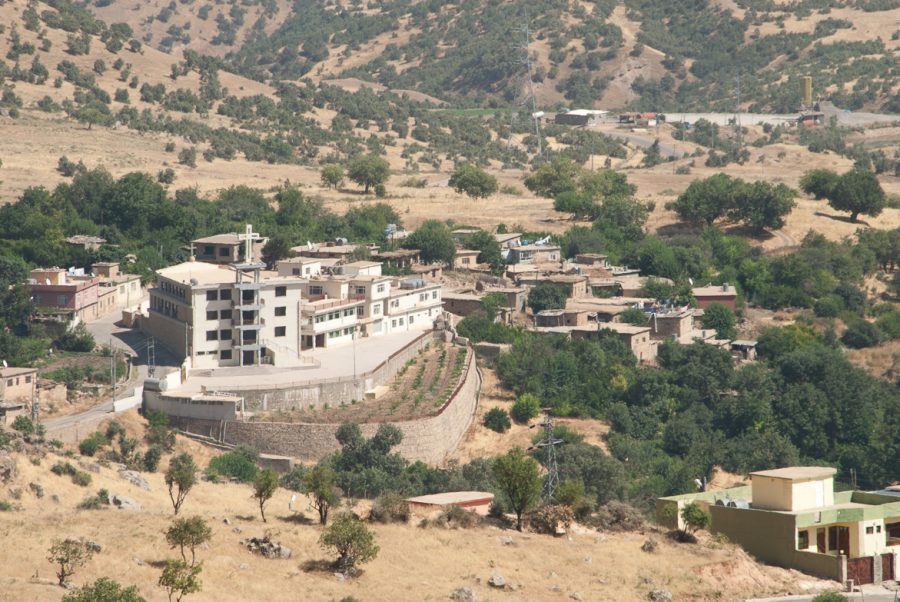
Mar Kuryakos monastery was at its height between the 5th and the 7th century.
At this time it hosted a large number of monks.
The upcoming of Islam and its diffusion throughout the region put an end to this flourishing spirituality. The monastery ended up by disappearing.
The building of Mar Kuryakos spiritual centre in Kani, on the supposed site of the original monastery results from the demanding processes of successive and uncompleted destroying, transforming and rebuilding.
Designation
Mar Kuryakos in Kani is not exactly a monastery. There are no longer any monks there. It is not either a simple church, isolated in its own environment. The name “church” itself would be insufficient. Should it be called a “sanctuary” then? It is not its first mission though, although a small oratory is dedicated its patron saint. It would be more accurate to use the phrase “spiritual centre”. The site indeed welcomes all through the year numbers of visitors, tourists and pilgrims, from Iraq and from abroad, coming here to pray, celebrate, discover and get some rest. The ordinary life of the centre also consists in welcoming the children of the village, for Sunday school or Bible study, and the local families who come here to celebrate the Liturgy of Hours or Sunday mass.
Location
Mar Kuryaqos spiritual center in Kani lies 37°04’54.6″N 43°31’22.3″E and 944 metres high. Despite its size and influence, there are no road signs that travellers would usually expect to help find your way. To get there, you need to take the winding roads, so typical of Iraqi Kurdistan. The spiritual centre stands in the small village, a stone’s throw from the city of Amadya where the Chaldean bishop used to sit. Nested in a basin below the road, Kani lies in the middle of mountains, 80 km north-east from Dohuk and 8 km from the Sulav gorges.
The Kani village is very old. Assyrian kings used to be frequent visitors, coming here for hunting parties or for managing their businesses.
Kani comes from the word Oukama, which means black, with regard to the colour of its stones.
Fragments of a hagyography
According to the tradition, Mar Kuryakos (also known as Saint Cyricus) was a martyr-child, in the 4th century, under the reign of the Persian Sassanian king -Shapur II, tortured for having refused to abandon the Christian faith taught by his devout mother Julitta (or Eulita).
His feast day is July 15th; Mar Kuryakos is appealed to in all the Christian East. Many Assyrian-Chaldean and Armenian churches bear the name of the saint child in Iraq and in Turkey.
Fragments of history
Kani and its region, where jewish communities used to live, has embraced Christianity under the impulse of the very first preachers, like Zeya and Sawa or evangelists like Thomas or Addai, who are considered as founding fathers of the Church of the East.
Mar Kuryakos monastery was at its height between the 5th and the 7th century, at this time it hosted a large number of monks, among which the scholar Youcef Hazaya and Rabban Oukama, prior of the monastery in 628.
The upcoming of Islam and its diffusion throughout the region put an end to this flourishing spirituality. The monastery ended up disappearing. Only the baptistery has been found and preserved, as it is related in the village.
Kani is part of the diocese of Amadya. Until the breaking up of the Ottoman Empire, this poor piece of land “where most of the churches are on the brink of collapsing” [1] was part of Turkey. “Catholicism arrived in this part of the bishopric as from the 17th century.[2]” In 1914, there were more than 60 Chaldeans in Kani[3]. In August 2017, the very vigorous local bishop Mgr Rabban al Qas and native from Kani, counted there 77 Catholic Chaldean families.
Between 1961, when the Kurdish insurrection started in Iraq, and 1970, date of the peace agreement, Kani was bombed three times. The village however remained exclusively Christian until Saddam Hussein had thousands of mountain villages destroyed in 1983 and forced the population to move. Kani did not avoid this process. From then on, Arabic-speaking Muslim families came and started to settle here. Let us mention today (August 2017) the presence of 300 Muslim families in the upper part of the village. Those families, mostly Kurds of Arabs, came after the Nineveh plain was invaded by the ISIS fighters in 2014.
The building of Mar Kuryakos spiritual centre in Kani, on the supposed site of the original monastery results from the demanding processes of successive and uncompleted destroying, transforming and rebuilding.
In the second half of the 20th century, the former Bishop of Amadya, Mgr Raphael Bidawid[4], started to rebuild the church in Kani, using the stones of the ancient village church, which he simply had destroyed. Just the walls remained, leaving the Chaldean community churchless for more than 20 years.
It is only at the end of the sixties that a roof was added by the following bishop, Mgr Kuryakos Mouses. The last step of the rebuilding was made by Mgr Rabban al Qas. In the early 21st century, the Bishop built the large Mar Kuryakos spiritual centre at the place of the uncompleted church. It was consecrated in 2013.
Behind the centre, in the old part of the village, a gravestone with inscriptions in Syriac lies as a testimony at the place of the ancient church. Today there is only the mound, where it used to stand, still to be seen.
[1] In, L’Eglise Chaldéenne Catholique, autrefois et aujourd’hui, Abbé Joseph Tfinkdji, Chaldean priest in Mardin (Mesopotamia), Extract from the Annuaire Pontifical catholique de 1914, Bureaux des Études ecclésiastiques, Paris, 1913.
[2] Id.
[3] Id.
[4] Futur Patriarch of Babylon on the Chaldeans
Description of the spiritual centre
Raised upon a large esplanade, opened southwards and maintained by a solid retaining wall, Mar Kuryakos spiritural centre in Kani consists in a real compound, with several buildings sharing religious and functional use, the vegetable path lying at their foot. The centre’s architecture, in reinforced concrete, is the personal piece of work of Mgr Rabban al Qas.
At the entrance of the compound, the church is dedicated to the Assumption of the Virgin Mary. Its reveals an asymmetrical structure between the axis of the altar with the spacious nave and the large slanted wall, pierced with a huge Latin cross-shaped window in the middle of it, opening onto the Levant’s light.
On the other side, the church raises its squared bell-tower surmounted by a tall cross. The church’s roof is a totally flat terrace. Nothing in the church’s style can reveal the Assyrian style. From the structural works to the inside finishing touches, nothing can demonstrate a local nor regional Assyrian-Chaldean identity. What a stunning building in a village that seems to have been fixed in time of previous centuries. The whole specificity of this building lies in its universalism and claimed modernity.
Only two structural elements prove the building refers to ancient times: the old baptistery, backing onto the Eastern wall and the altar’s stones, which come from the ancient village church.
You need to get out of the church of the Assumption and walk down the esplanade to discover a small oratory dedicated to Mar Kuryakos (Saint Cyricus). It stands as the final evidence of the existence of a monastery there, which used to be a high place for spirituality and where hundreds of monks used to live in. Today, people come here to worship, pray in front of a stone engraved with a few Syriac characters and also read the printed story of the life of the patron saint and light a few candles in his name.
Monument's gallery
Monuments
Nearby
Help us preserve the monuments' memory
Family pictures, videos, records, share your documents to make the site live!
I contribute
